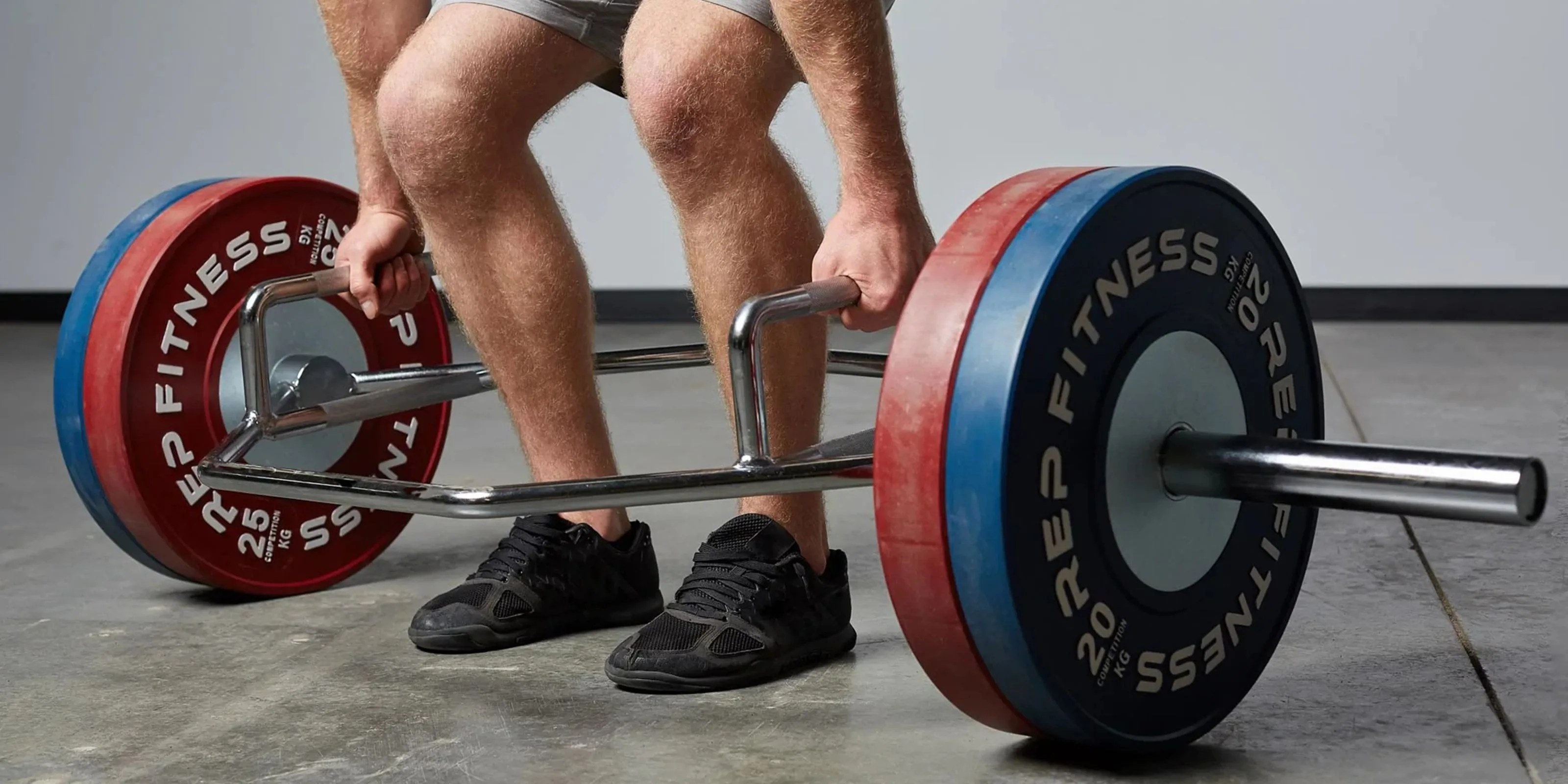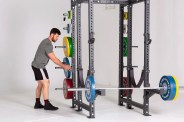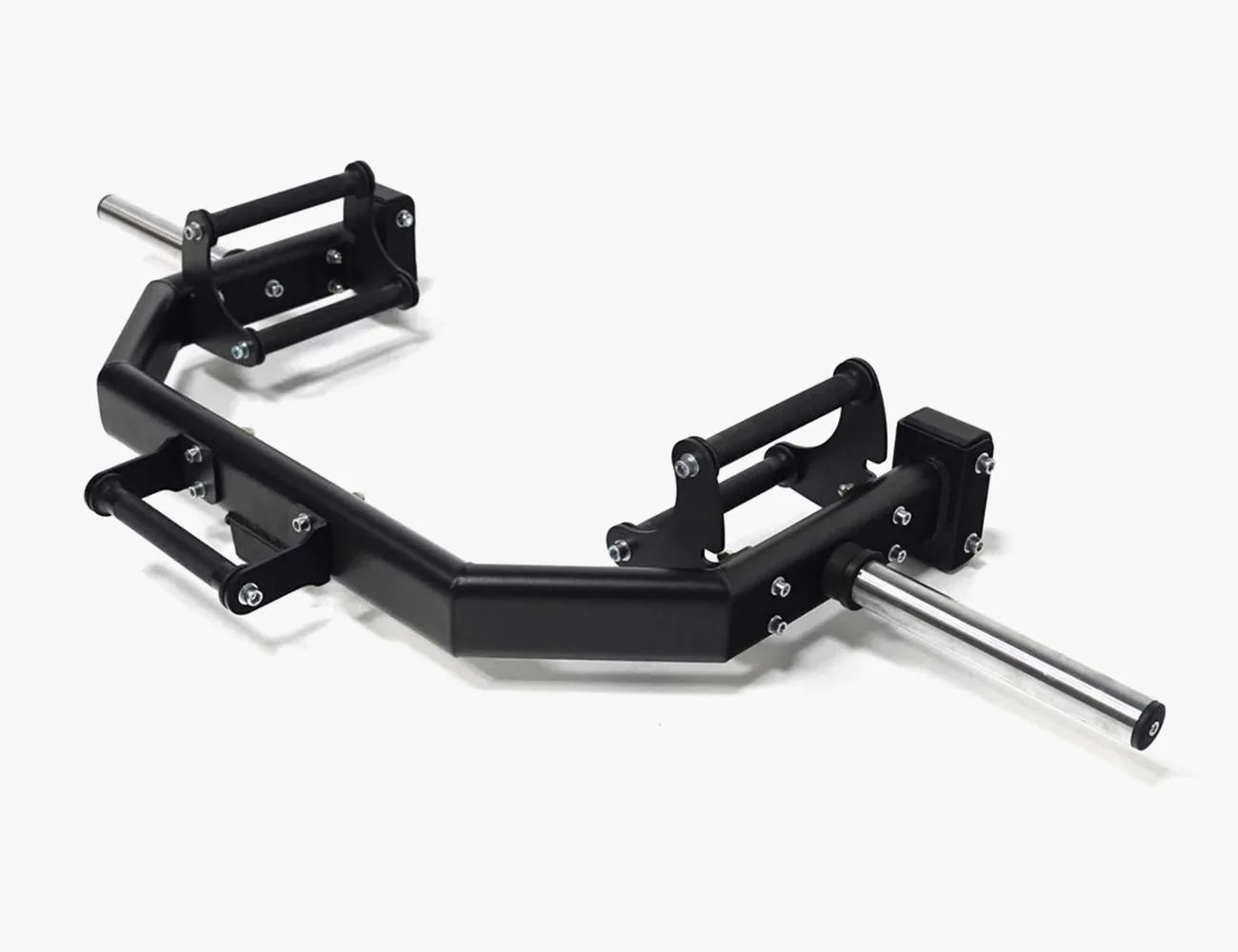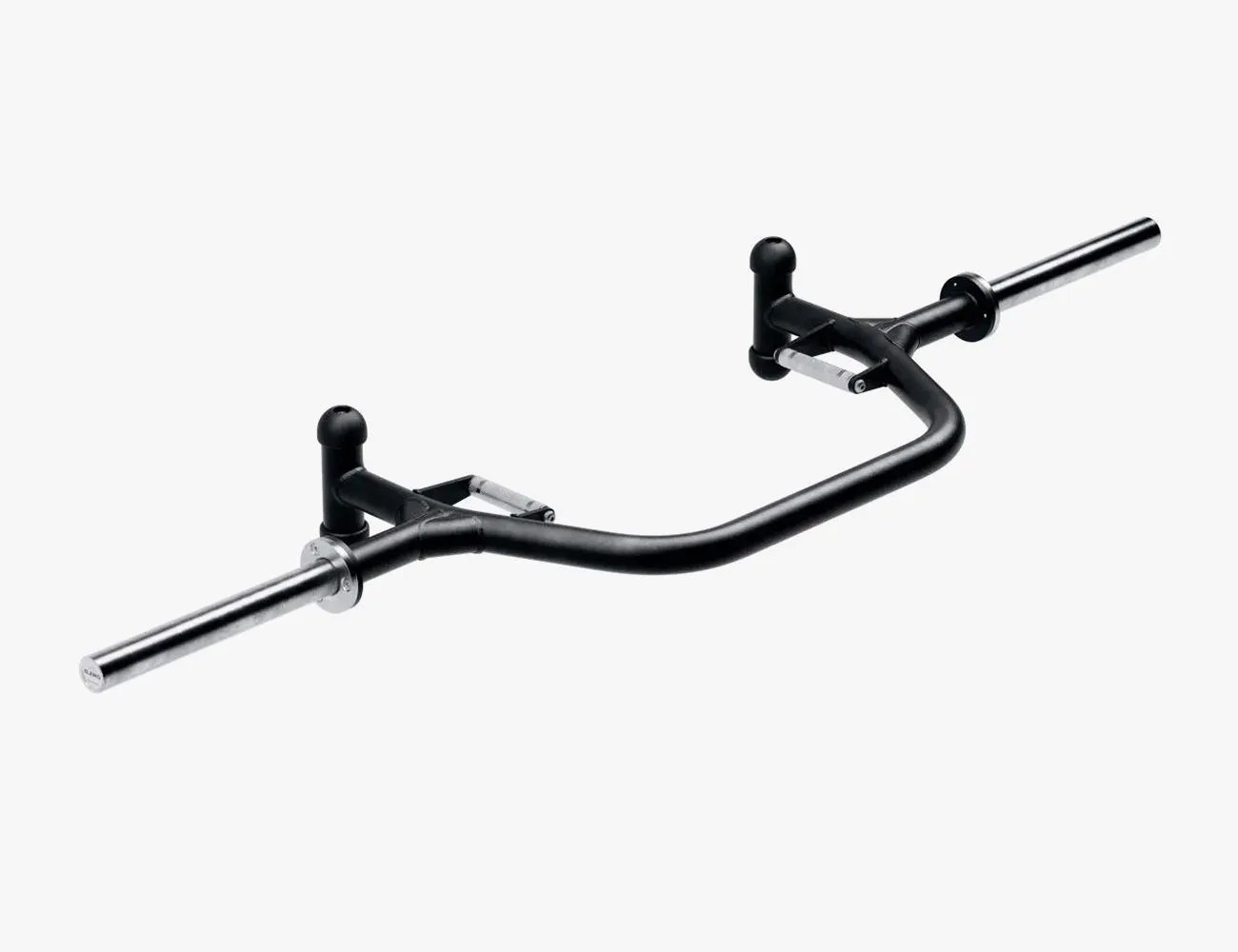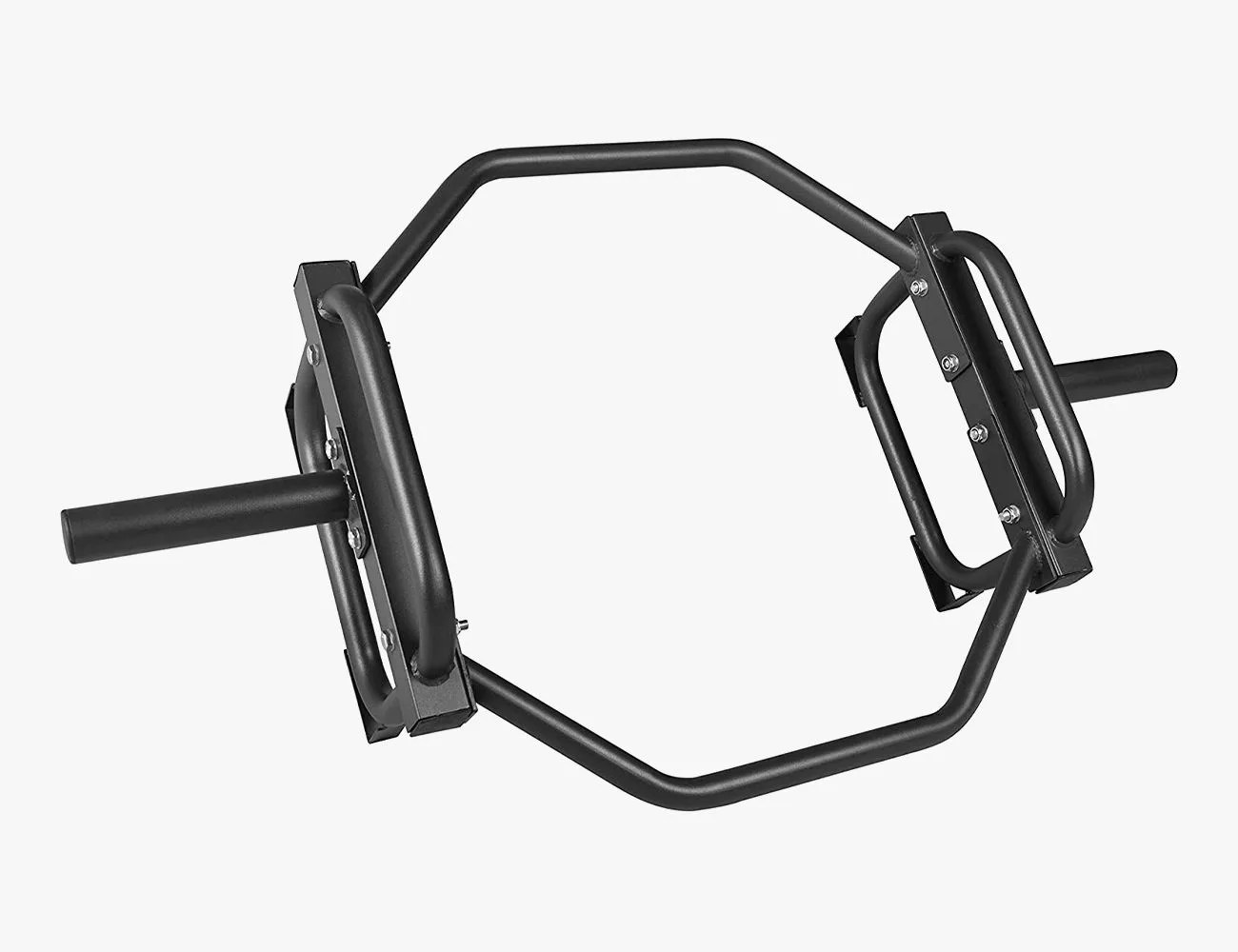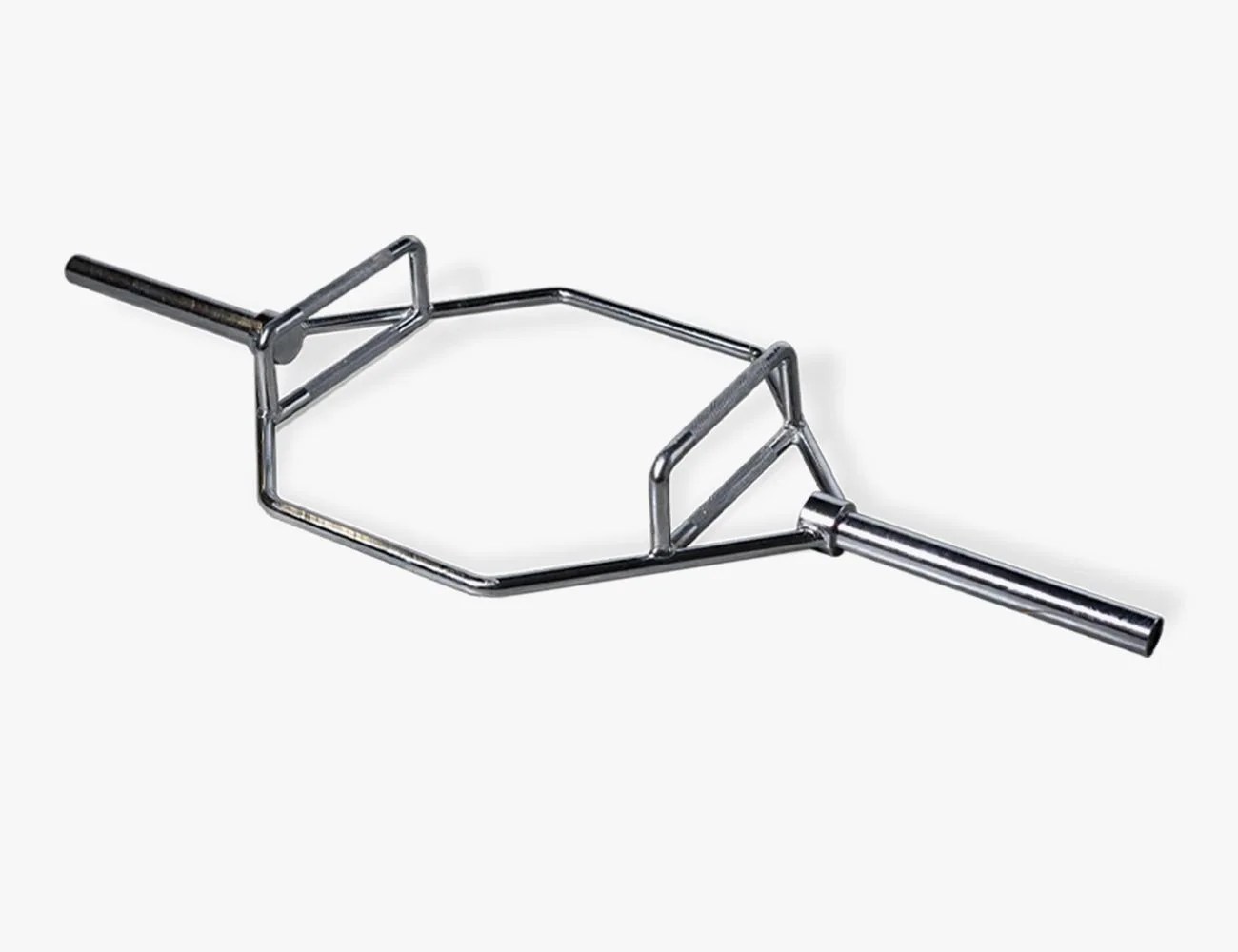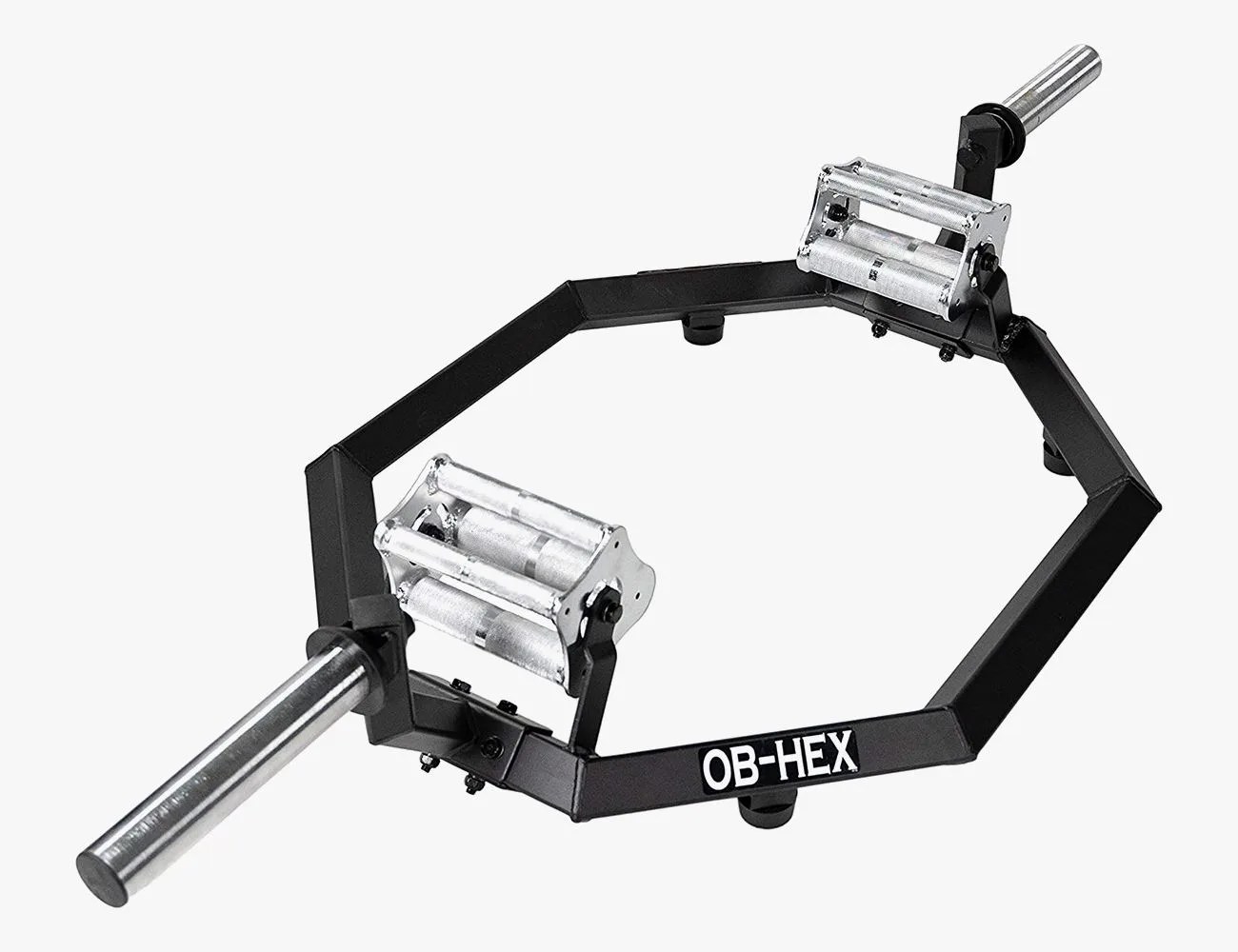Sure, the barbell gets a lot of praise for its strength-boosting benefits, but in some scenarios, it’s not the right tool for the job. Especially for those new to barbell exercises like deadlifts and rack pulls, barbells can force you into uncomfortable stances that can lead to potential injury, and thus, less time training and more time recovering. Thankfully, though, there are other options out there that allow for efficient strength training without the needed expertise.
Hex bars, for example, put more emphasis on the quads to pull the weight from the floor, relying on more muscle groups to move the weight and making things a little easier than a traditional barbell. Combine that with the yoke-style grip, where your hands are parallel with your toes, and the hex bar — also known as a trap bar — can be a great tool when looking to add deadlifts or other lower-body exercises to your strength training routine.
There are a handful of these hexagonal specialty bars out there, but not every bar is up to the task. Before we step up to the platform and dive into the best hex bars on the market, here are a few things to consider.
Products in the Guide
-
Force USA Walkthrough Trap Bar
BEST OVERALL HEX BAR
Read more -
Eleiko Öppen Deadlift Bar
BEST UPGRADE HEX BAR
Read more -
CAP Barbell Olympic Trap Bar
BEST BUDGET HEX BAR
Read more -
Rep Fitness Trap Bar
BEST HEX BAR FOR BEGINNERS
Read more -
Titan Fitness Rackable Hex Trap Bar v3
BEST HEX BAR FOR POWER RACKS
Read more -
Valor Fitness OB-HEX Hex Trap Bar
BEST MULTI-GRIP HEX BAR
Read more
What to Consider When Choosing a Hex Bar
Knurling
Like any barbell, hex bars feature a knurling pattern across the grip to help facilitate better handling during lifts. The diamond-style engraving is designed to dig into your palms or weightlifting gloves, creating a sense of friction that allows you to hold onto the bar better throughout the entirety of the movement. Knurling can vary in terms of intensity. While some hex bars might feature a subtle pattern that offers some tackiness, others may boast a more aggressive tread designed for maximum grip. These styles of high-octane knurling patterns can be a bit abrasive to newcomers, so it’s worth checking out before making a purchase.
Weight Capacity
While hex bars can be used for a multitude of exercises, the main two modalities where these specialty bars come into play are the deadlift and barbell row. These lower-body movements employ a variety of muscle groups, which means you’re likely to move a lot of weight once you become accustomed to the structure of the lift itself. For this reason, it’s vital that you choose a trap bar that’s up to the potential task at hand. Hex bars can vary in weight capacity from 500–1,000 pounds. Think about your training goals and strength potential to ensure your specialty bar can handle the loads you’ll be placing on it — or, at least, hope to place on it in the future.
Interior Dimensions
A hex bar gets its name from the hexagonal shape it displays within the center. This is where the athlete stands when using the bar, so it helps to have the proper room to work. Most trap bars feature an interior diameter between 25–30 inches, which should be enough for most athletes. For larger athletes or those that don’t want to feel constricted within the barbell, I recommend opting for a walkthrough setup. This essentially removes one half of the hexagonal shape, allowing for an open front or back.
Handle Placement
Similar to interior diameter, your hands should not feel constricted or widened when working with a hex bar. Most trap bars should feature handles at the sleeves, which should provide a comfortable lifting experience, provided the interior diameter is suitable enough for your stance. This feature is up to personal preference, though, and can take some experimenting to truly find the right grip setup for your personal needs.
